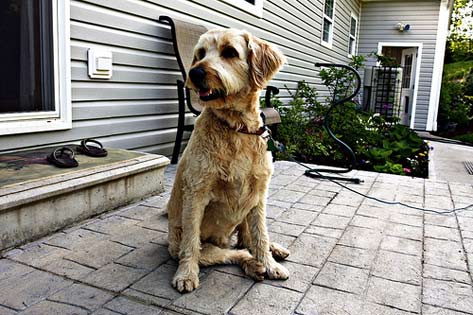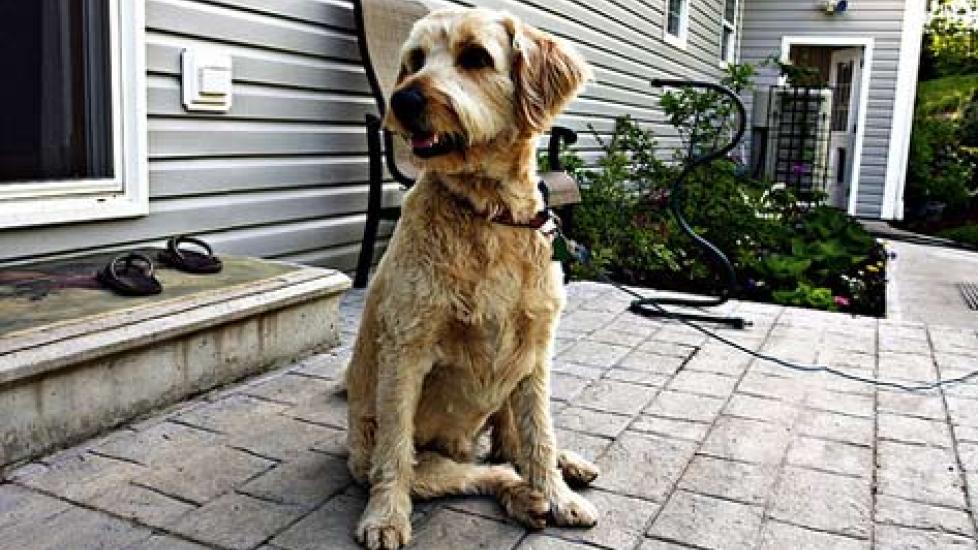Deconstructing the 'Designer Dog'

by Victoria Heuer
What comes to mind when you hear the term "designer dog"? For some people, the term conjures images of little dogs traveling in their little designer totes, which are perched on the shoulders of their high-fashion, globe trotting "puppy-mammas." For others — those who are better versed in the world of designer dogs — the image that comes to mind is simply that of a dog that is the best of two purebreds. Both images can be true, of course, and both images illustrate the social consciousness of the dog as status symbol, since designer dogs often carry a price tag that exceeds the cost of their purebred parents. In any case, a designer dog is never a mutt — it is a hybrid.
Just a Fad?
While the term "designer dog" is fairly new, there is nothing new about them. Although many people who were new to the dog world saw the pairings of different breeds as a 20th century fad that was worth noting, avid breeders had been crossing purebreds for centuries. The difference was that earlier hybrids were intended for work purposes – to make better hunting or shepherding dogs, in many cases. The Australian Shepherd is a wonderful example of this, but she’s not the only one. Some of our most recognized and entrenched breeds started out as designer dogs. The Bull Terrier (Old English Bulldog+Old English Terrier) became "official" in 1885.
One of the main sticking points may be that hybrid dogs are not recognized by breed clubs, leading some to wonder why anyone would pay the hefty prices, but that has not slowed the still growing movement. There are currently over 500 "designer" breeds recognized by the Designer Dogs Kennel Club, and some breeders take their programs very seriously.
Breed Qualities
Today’s designer dogs are more likely to be companions than work mates. They are bred for appearance, temperament, and often for their hypoallergenic (i.e., non-shedding) qualities. In fact, returning to Australia, we find that one of the most popular designer dogs, the Labradoodle, originated there in the 1970s, and even this breed began as a working dog. The Labrador, recognized for its excellent guiding abilities, and the Poodle, known for its intelligence, trainability and very low shedding, were paired to fill a need for disabled people who had allergies to dog dander. This initial endeavor turned into a movement that has become a serious world-wide breeding program. While the Labradoodle is not an officially recognized pure-breed yet, it is well on its way to becoming one.
The Poodle, in part because of its hypoallergenic quality, is one of the most popular breeds for crossbreeding. The Poodle has been the progenitor of the Cocka-Poo (Poodle+Cocker Spaniel), the Yorkie-Poo (Poodle+Yorkshire Terrier), the Pug-a-Poo (Poodle+Pug), and even the Saint Berdoodle (I’ll let you guess).
Choosing Responsibly
Just as consumers are willing to hand over their hard-earned dough for the latest gadgetry, they will also fork it over for the newest and cutest puppy breed. That can be both good and bad, since we want the ethical breeders to succeed, but there will always be opportunists in the ranks taking advantage of the supply and demand chain. To bring a hybrid to its full potential takes true dedication to the vision and an ethic that supersedes monetary rewards.
You want a breeder who gives serious thought to the compatibility of the pairs, provides proof of the parents’ health and well being, along with the results of genetic testing to screen out genetic problems such as hip dysplasia and eye disorders. In other words, just as with a purebred, you should expect papers with your hybrid puppy too, even if you don’t plan to breed on your own.
"Designer dogs" and hybrids (aka mutts) can also often be found at your local animal shelter. So, what better way to help save a life and get a wonderful companion than to adopt?!?
Of course, not all hybrids are created equal, but if you responsibly choose one that fits then you will more than likely have nothing to worry about. And should your hybrid join the ranks of the purebreds later on, you’ll be able to say, "I knew them when..."
Image: Martin Cathrae / via Flickr
